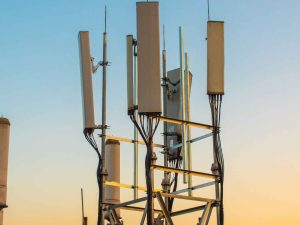5G Security Overview

Course Overview
As 5G networks continue to be deployed globally, the unprecedented speed, scale, and connectivity they enable also introduce a vastly expanded and complex security landscape. With the increased use of virtualization, cloud-native architectures, and a massive surge in connected devices, 5G security is now a top priority for mobile operators, enterprises, and regulators alike.
This course provides a comprehensive overview of the security considerations unique to 5G, equipping participants with the knowledge to understand and mitigate the evolving threat landscape. It begins with a 5G Network Overview to establish the architectural foundation, followed by an exploration of key 5G Security Drivers shaping current industry approaches.
Participants will gain insights into Physical Layer Security in 5G Networks, understand how 3GPP Security Features evolve from previous generations, and examine the 5G Infrastructure Security Principles that support secure network deployment and operation. The course also addresses Network Slicing Security, a critical aspect of ensuring isolation and protection across multiple virtualized network segments.
By the end of the training, attendees will be able to identify potential vulnerabilities, assess security architectures, and apply best practices for designing and maintaining secure 5G networks. The course emphasizes a holistic and proactive approach to 5G security—enabling safe third-party integration, protecting against unauthorized control, and supporting a trusted ecosystem for innovation and monetization.
Target Audience
- Telecommunications Engineers and Network Architects
- Cybersecurity Professionals and Analysts
- Technical Managers and Project Leads overseeing 5G deployment projects
- Regulators and Policy Makers
- System Integrators and Solution Providers
- Government and Critical Infrastructure Stakeholders
Duration & Training Format
- Classroom: 3 days
- LIVE Virtual: 21 hours
- A minimum of 8 or more participants is required for a Classroom session to commence.
- A minimum of 6 or more participants is required for a LIVE Virtual session to commence.
- LIVE Virtual courses can be conducted for 5 hours or 7 hours daily. Please note that the number of training days will be extended if you opt for 5 hours daily.
Upcoming Course Dates
3 – 5 Dec 2025 (Wed – Fri), GMT +8
If you are keen on attending this course, please register your interest via our course enquiry form.
Course Objectives
At the end of this course, participants will be able to:
- Identify and explain the key security drivers, threats, and requirements shaping 5G network security, and develop a high-level understanding of the 5G security landscape
- Describe the core components and structure of a 5G security architecture
- Analyze common vulnerabilities and security concerns across various layers of the 5G network
- Evaluate and apply appropriate security measures and countermeasures to address 5G-specific risks
Course Outline
- 5G Network Overview
- 5G Use Cases
- 5G Architecture
- 5G Main Mechanisms
- 5G Security Drivers
- Major 5G Security Issues
- Status in 5G Security Standardization: 3GPP
- Challenges for Operators
- Challenges for Verticals
- Physical Layer Security in 5G Networks
- iJAM’s Operating Principle
- Watermark‐based Blind Physical Layer Security (WBPLSec) Protocol
- 3GPP Security Features
- SEAF / ARPF
- Authentication Protocols
- Key Hierarchy
- SUPI & SUCI
- Inter Operator Network Security
- 5G Infrastructure Security Principles
- SDN and NFV security
- Network Function Virtualization Security
- Isolation and Traffic Separation in the Telco Cloud
- Cloud and MEC Security
- 5G Cloud Computing Architecture
- Five Immutable Laws of Virtualization Security
- Centralized Security Architectures
- Customer Edge Switching
- Customer Edge Traversal Protocol (CETP)
- Network Slicing Security
- Network Slicing – Examples
- Network Slice Isolation – The Crucial Slicing Security Aspect
- Security Management and Orchestration
- IoT Security
Note: A Certificate of Completion will only be issued upon achieving at least 75% attendance for the course.



